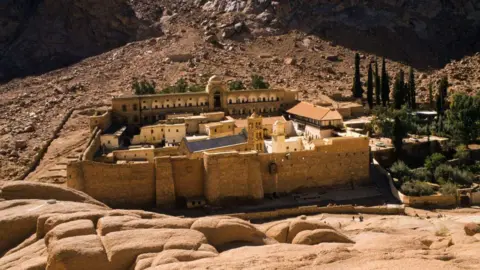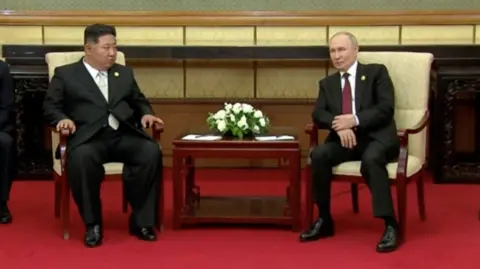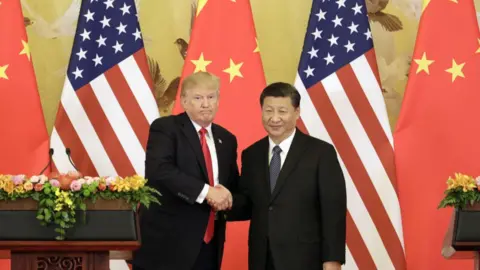The Chinese government has officially commenced the construction of what is set to be the world's largest hydropower dam, located in the Tibetan region along the Yarlung Tsangpo river. The ceremony led by Premier Li Qiang, announced this ambitious project, has instigated significant apprehension in both India and Bangladesh, countries that rely on the water resources of this vital waterway.
The Motuo Hydropower Station, with an estimated cost of $12 billion yuan (around $1.67 billion USD), aims to produce thrice the energy output of China's existing Three Gorges Dam upon its completion. However, with the river's pathway winding through India and Bangladesh, the geopolitical implications and potential repercussions have alarmed local officials and environmentalists alike.
The primary concerns revolve around the potential diversion and control of the river by China, which is perceived to threaten the livelihoods of millions. Pema Khandu, the Chief Minister of Arunachal Pradesh, voiced his apprehensions stating that the dam could lead to a severe decrease in water flow in the region, endangering tribal communities and agricultural practices.
India has previously addressed its concerns directly with China, focusing on the adverse impacts of large-scale dams and the necessity for transparency and cooperative dialogue regarding shared water sources. India itself is planning to build a hydropower project on the Siang river to mitigate flooding risks associated with sudden water releases from the Chinese dam.
Bangladesh has also expressed worry over the project, seeking more information from China on the dam’s implications for the flow of the rivers crucial to its ecosystem. As hydropower development in Tibet accelerates, the Chinese state media heralds these projects as beneficial for both energy production and local improvements, while critics argue that this represents a gross exploitation of Tibetan land and a risk to the delicate balance of the region’s biodiversity.
The dam’s site, known for its startling topography in one of the deepest canyons globally, offers a significant hydropower potential, according to Chinese authorities. However, reports of strong local protests against similar constructions have surfaced, with activists describing governmental crackdowns on dissenting voices, which have grown in intensity over the years.
Experts warn that the environmental ramifications coupled with social unrest may intensify as China pursues hydroelectric projects to meet its energy demands in burgeoning eastern cities. This complex interplay of infrastructure development, regional diplomacy, and environmental advocacy remains a focal point in discussing the future of water security in South Asia.
The Motuo Hydropower Station, with an estimated cost of $12 billion yuan (around $1.67 billion USD), aims to produce thrice the energy output of China's existing Three Gorges Dam upon its completion. However, with the river's pathway winding through India and Bangladesh, the geopolitical implications and potential repercussions have alarmed local officials and environmentalists alike.
The primary concerns revolve around the potential diversion and control of the river by China, which is perceived to threaten the livelihoods of millions. Pema Khandu, the Chief Minister of Arunachal Pradesh, voiced his apprehensions stating that the dam could lead to a severe decrease in water flow in the region, endangering tribal communities and agricultural practices.
India has previously addressed its concerns directly with China, focusing on the adverse impacts of large-scale dams and the necessity for transparency and cooperative dialogue regarding shared water sources. India itself is planning to build a hydropower project on the Siang river to mitigate flooding risks associated with sudden water releases from the Chinese dam.
Bangladesh has also expressed worry over the project, seeking more information from China on the dam’s implications for the flow of the rivers crucial to its ecosystem. As hydropower development in Tibet accelerates, the Chinese state media heralds these projects as beneficial for both energy production and local improvements, while critics argue that this represents a gross exploitation of Tibetan land and a risk to the delicate balance of the region’s biodiversity.
The dam’s site, known for its startling topography in one of the deepest canyons globally, offers a significant hydropower potential, according to Chinese authorities. However, reports of strong local protests against similar constructions have surfaced, with activists describing governmental crackdowns on dissenting voices, which have grown in intensity over the years.
Experts warn that the environmental ramifications coupled with social unrest may intensify as China pursues hydroelectric projects to meet its energy demands in burgeoning eastern cities. This complex interplay of infrastructure development, regional diplomacy, and environmental advocacy remains a focal point in discussing the future of water security in South Asia.





















